Abstract
The giant tube worm, Riftia pachyptila (phylum Vestimentifera), is known only from four widely separated sulfide-rich deep-sea hydrothermal vent systems. This invertebrate is nourished by intracellular, chemoautotrophic bacterial symbionts which reside in a specialized trophosome tissue. The symbiont has not been cultured independently and is believed to be acquired de novo by host larvae of each generation. In the current study, R. pachyptila symbiont DNA was purified from the two most distant sites on the basis of its difference in density versus host DNA. These two standards were hybridized against trophosome DNAs of 13 individuals from the Guaymas Basin, Galapagos Rift, and 13°N vents. This indicated that all R. pachyptila symbionts are conspecific and that the variability in DNA-DNA hybridization (relative binding ratio [RBR]) was comparable within or between widely separated vents. The symbiont of another tube worm, Tevnia jerichonana, was found to be the same as that of R. pachyptila, the first case in which distinct hosts possess the same sulfur bacterial symbiont. By contrast, Lamellibrachia sp. (same class as T. jerichonana) showed insignificant RBR with the R. pachyptila symbiont. DNA derived from solely eucaryotic tissue of R. pachyptila showed a surprisingly high RBR (20 to 50) with density-separated DNA standards. With DNAs obtained from physically separated symbionts, independent solution hybridization experiments confirmed the above-described conclusions. Possible explanations for this host-symbiont homology are discussed.
Full text
PDF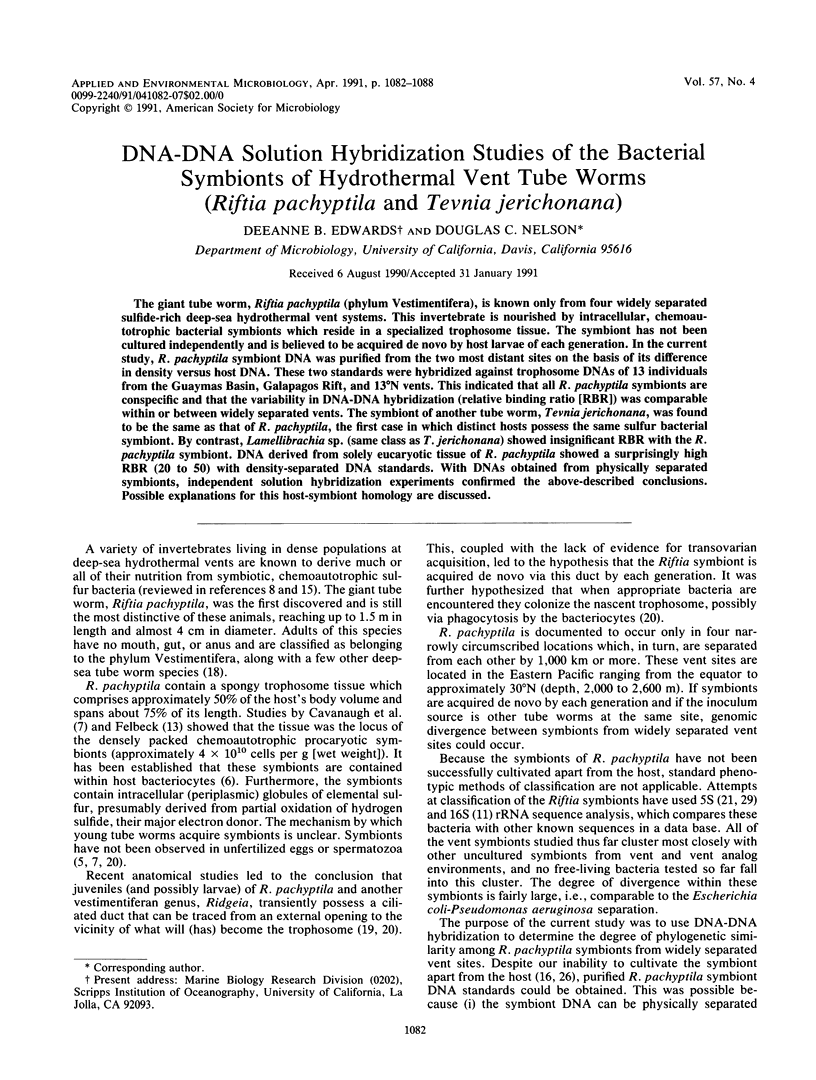
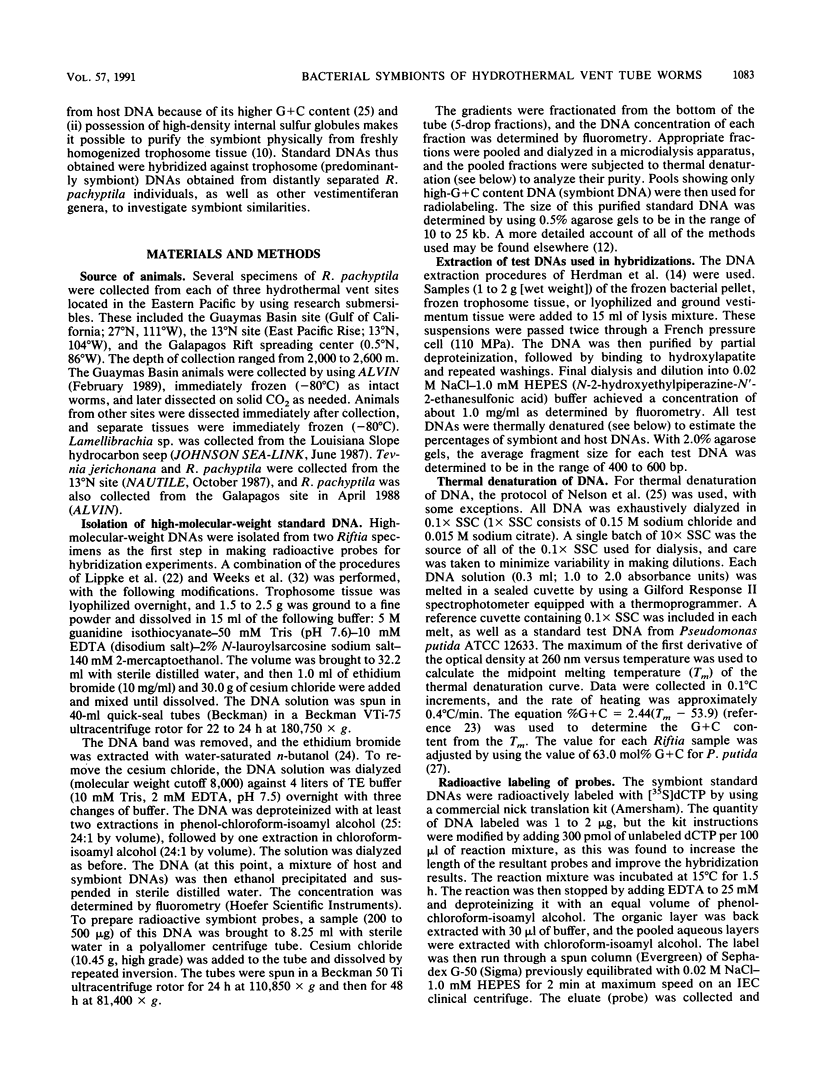
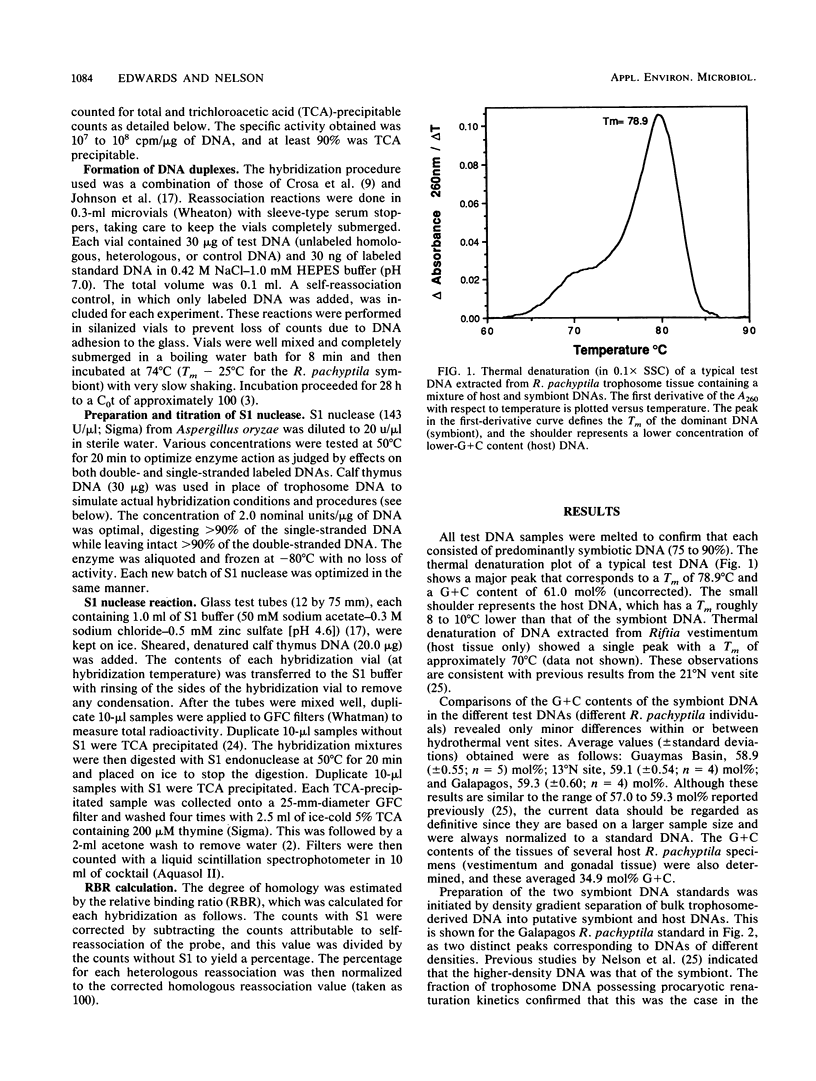
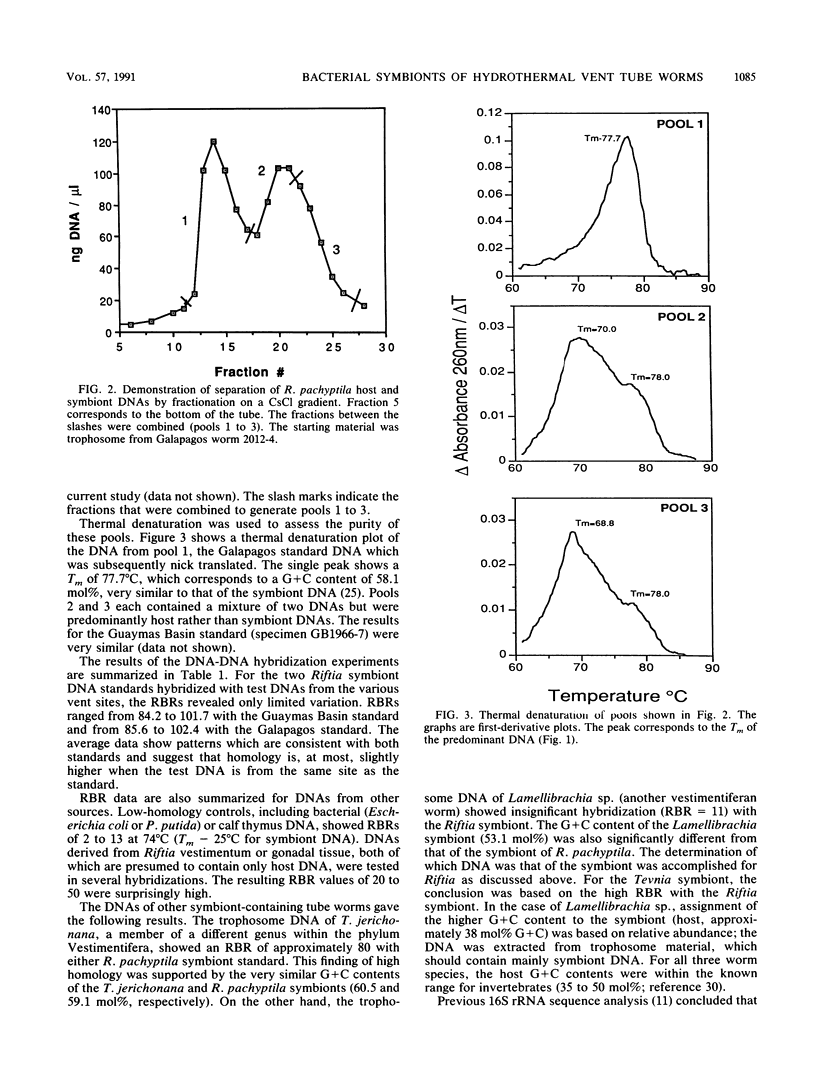
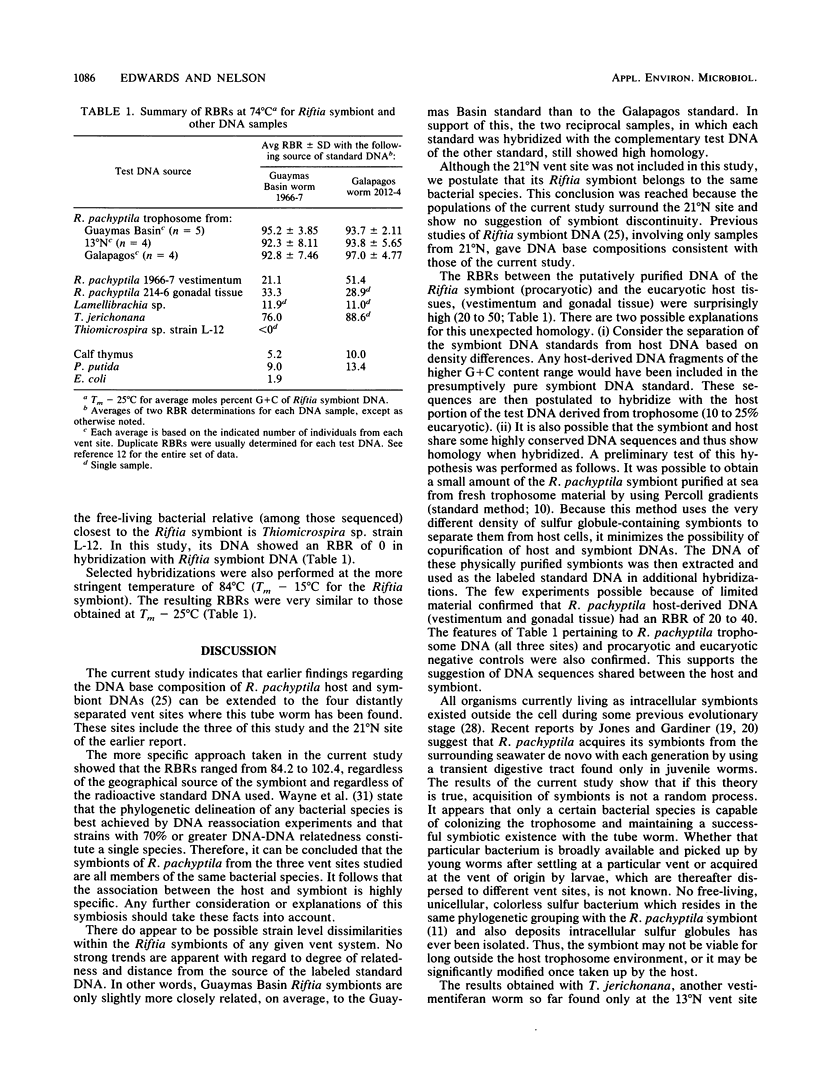
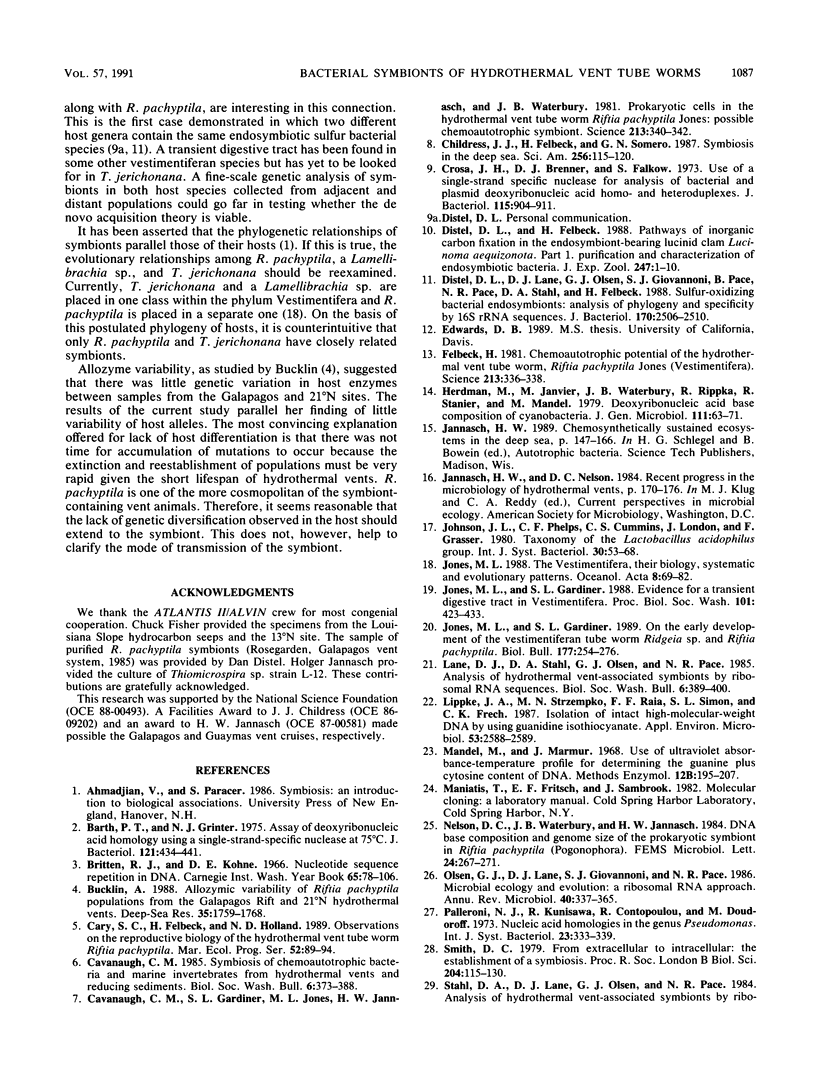
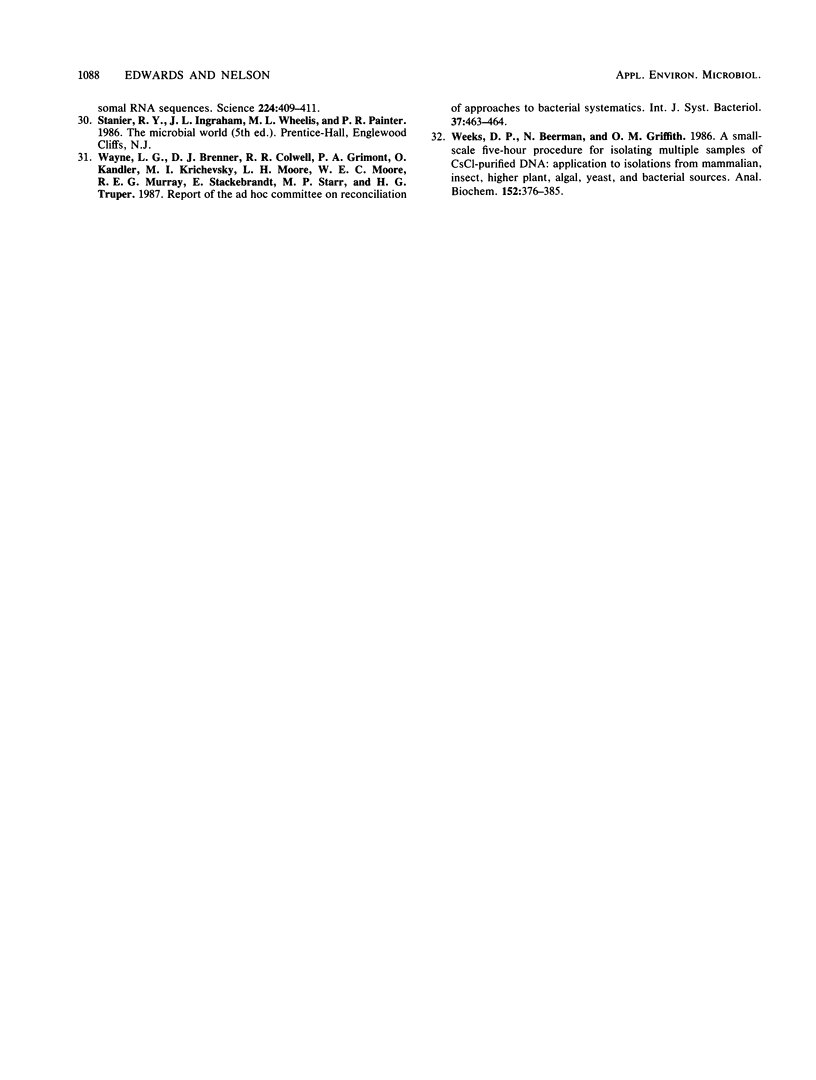
Selected References
These references are in PubMed. This may not be the complete list of references from this article.
- Barth P. T., Grinter N. J. Assay of deoxyribonucleic acid homology using a single-strand-specific nuclease at 75 C. J Bacteriol. 1975 Feb;121(2):434–441. doi: 10.1128/jb.121.2.434-441.1975. [DOI] [PMC free article] [PubMed] [Google Scholar]
- Cavanaugh C. M., Gardiner S. L., Jones M. L., Jannasch H. W., Waterbury J. B. Prokaryotic Cells in the Hydrothermal Vent Tube Worm Riftia pachyptila Jones: Possible Chemoautotrophic Symbionts. Science. 1981 Jul 17;213(4505):340–342. doi: 10.1126/science.213.4505.340. [DOI] [PubMed] [Google Scholar]
- Crosa J. H., Brenner D. J., Falkow S. Use of a single-strand specific nuclease for analysis of bacterial and plasmid deoxyribonucleic acid homo- and heteroduplexes. J Bacteriol. 1973 Sep;115(3):904–911. doi: 10.1128/jb.115.3.904-911.1973. [DOI] [PMC free article] [PubMed] [Google Scholar]
- Distel D. L., Lane D. J., Olsen G. J., Giovannoni S. J., Pace B., Pace N. R., Stahl D. A., Felbeck H. Sulfur-oxidizing bacterial endosymbionts: analysis of phylogeny and specificity by 16S rRNA sequences. J Bacteriol. 1988 Jun;170(6):2506–2510. doi: 10.1128/jb.170.6.2506-2510.1988. [DOI] [PMC free article] [PubMed] [Google Scholar]
- Felbeck H. Chemoautotrophic Potential of the Hydrothermal Vent Tube Worm, Riftia pachyptila Jones (Vestimentifera). Science. 1981 Jul 17;213(4505):336–338. doi: 10.1126/science.213.4505.336. [DOI] [PubMed] [Google Scholar]
- Lippke J. A., Strzempko M. N., Raia F. F., Simon S. L., French C. K. Isolation of intact high-molecular-weight DNA by using guanidine isothiocyanate. Appl Environ Microbiol. 1987 Oct;53(10):2588–2589. doi: 10.1128/aem.53.10.2588-2589.1987. [DOI] [PMC free article] [PubMed] [Google Scholar]
- Olsen G. J., Lane D. J., Giovannoni S. J., Pace N. R., Stahl D. A. Microbial ecology and evolution: a ribosomal RNA approach. Annu Rev Microbiol. 1986;40:337–365. doi: 10.1146/annurev.mi.40.100186.002005. [DOI] [PubMed] [Google Scholar]
- Stahl D. A., Lane D. J., Olsen G. J., Pace N. R. Analysis of hydrothermal vent-associated symbionts by ribosomal RNA sequences. Science. 1984 Apr 27;224(4647):409–411. doi: 10.1126/science.224.4647.409. [DOI] [PubMed] [Google Scholar]
- Weeks D. P., Beerman N., Griffith O. M. A small-scale five-hour procedure for isolating multiple samples of CsCl-purified DNA: application to isolations from mammalian, insect, higher plant, algal, yeast, and bacterial sources. Anal Biochem. 1986 Feb 1;152(2):376–385. doi: 10.1016/0003-2697(86)90423-9. [DOI] [PubMed] [Google Scholar]


